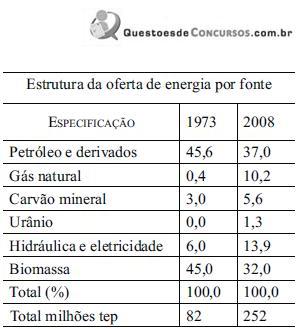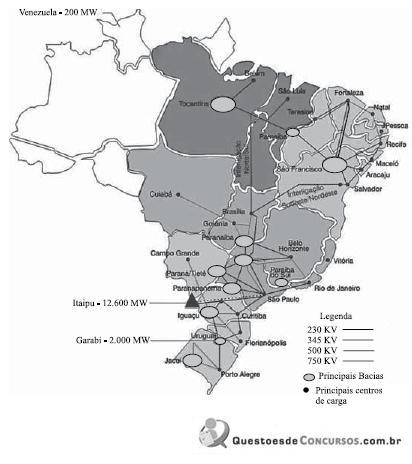Questões de Concurso Público CETESB 2009 para Engenheiro Civil
Foram encontradas 50 questões
One of my earliest memories is of my mother cleaning with
what looked to me like cooking ingredients. She would be listening
to the radio as she poured baking soda, lemon, and vinegar
combinations on the surfaces of our home. Magically these natural
cleaning products kept our home clean and smelling fresh, without
stretching an already thin household budget. Here are a few basic
household ingredients and items you can use to clean your home.
Vinegar naturally cleans like an all-purpose cleaner. Mix a
solution of 1 part water to 1 part vinegar in a new store bought
spray bottle and you have a solution that will clean most areas of
your home. Vinegar is a great natural cleaning product as well as
a disinfectant and deodorizer. Always test on an inconspicuous
area. It is safe to use on most surfaces and has the added bonus of
being incredibly cheap. Improperly diluted vinegar is acidic and
can eat away at tile grout. Never use vinegar on marble surfaces.
Don't worry about your home smelling like vinegar. The smell
disappears when it dries.
Lemon juice is another natural substance that can be used to
clean your home. Lemon juice can be used to dissolve soap scum
and hard water deposits. Lemon is a great substance to clean and
shine brass and copper. Lemon juice can be mixed with vinegar
and or baking soda to make cleaning pastes. Cut a lemon in half
and sprinkle baking soda on the cut section. Use the lemon to
scrub dishes, surfaces, and stains.
Baking soda can be used to scrub surfaces in much the same
way as commercial abrasive cleansers. Baking soda is great as a
deodorizer. Place a box in the refrigerator and freezer to absorb
odors. Put it anywhere you need deodorizing action. Try these three
kitchen ingredients as natural cleaning products in your home.
(http://housekeeping.about.com/cs/environment/a/alternateclean.30.10.2009.
Adaptado)
One of my earliest memories is of my mother cleaning with
what looked to me like cooking ingredients. She would be listening
to the radio as she poured baking soda, lemon, and vinegar
combinations on the surfaces of our home. Magically these natural
cleaning products kept our home clean and smelling fresh, without
stretching an already thin household budget. Here are a few basic
household ingredients and items you can use to clean your home.
Vinegar naturally cleans like an all-purpose cleaner. Mix a
solution of 1 part water to 1 part vinegar in a new store bought
spray bottle and you have a solution that will clean most areas of
your home. Vinegar is a great natural cleaning product as well as
a disinfectant and deodorizer. Always test on an inconspicuous
area. It is safe to use on most surfaces and has the added bonus of
being incredibly cheap. Improperly diluted vinegar is acidic and
can eat away at tile grout. Never use vinegar on marble surfaces.
Don't worry about your home smelling like vinegar. The smell
disappears when it dries.
Lemon juice is another natural substance that can be used to
clean your home. Lemon juice can be used to dissolve soap scum
and hard water deposits. Lemon is a great substance to clean and
shine brass and copper. Lemon juice can be mixed with vinegar
and or baking soda to make cleaning pastes. Cut a lemon in half
and sprinkle baking soda on the cut section. Use the lemon to
scrub dishes, surfaces, and stains.
Baking soda can be used to scrub surfaces in much the same
way as commercial abrasive cleansers. Baking soda is great as a
deodorizer. Place a box in the refrigerator and freezer to absorb
odors. Put it anywhere you need deodorizing action. Try these three
kitchen ingredients as natural cleaning products in your home.
(http://housekeeping.about.com/cs/environment/a/alternateclean.30.10.2009.
Adaptado)
One of my earliest memories is of my mother cleaning with
what looked to me like cooking ingredients. She would be listening
to the radio as she poured baking soda, lemon, and vinegar
combinations on the surfaces of our home. Magically these natural
cleaning products kept our home clean and smelling fresh, without
stretching an already thin household budget. Here are a few basic
household ingredients and items you can use to clean your home.
Vinegar naturally cleans like an all-purpose cleaner. Mix a
solution of 1 part water to 1 part vinegar in a new store bought
spray bottle and you have a solution that will clean most areas of
your home. Vinegar is a great natural cleaning product as well as
a disinfectant and deodorizer. Always test on an inconspicuous
area. It is safe to use on most surfaces and has the added bonus of
being incredibly cheap. Improperly diluted vinegar is acidic and
can eat away at tile grout. Never use vinegar on marble surfaces.
Don't worry about your home smelling like vinegar. The smell
disappears when it dries.
Lemon juice is another natural substance that can be used to
clean your home. Lemon juice can be used to dissolve soap scum
and hard water deposits. Lemon is a great substance to clean and
shine brass and copper. Lemon juice can be mixed with vinegar
and or baking soda to make cleaning pastes. Cut a lemon in half
and sprinkle baking soda on the cut section. Use the lemon to
scrub dishes, surfaces, and stains.
Baking soda can be used to scrub surfaces in much the same
way as commercial abrasive cleansers. Baking soda is great as a
deodorizer. Place a box in the refrigerator and freezer to absorb
odors. Put it anywhere you need deodorizing action. Try these three
kitchen ingredients as natural cleaning products in your home.
(http://housekeeping.about.com/cs/environment/a/alternateclean.30.10.2009.
Adaptado)
I. Diagnóstico ambiental da área de influência do projeto.
II. Análise dos impactos ambientais do projeto e de suas alternativas.
III. Definição das medidas mitigadoras dos impactos negativos.
IV. Elaboração do programa de acompanhamento e monitoramento dos impactos positivos e negativos.
O estudo de impacto ambiental desenvolverá, no mínimo, as atividades técnicas

A evolução da utilização da biomassa entre 1973 e 2008 corresponde a

Trata-se do mapa
 ), pode-se afirmar que o cubo da velocidade média é diretamente proporcional ao
), pode-se afirmar que o cubo da velocidade média é diretamente proporcional ao